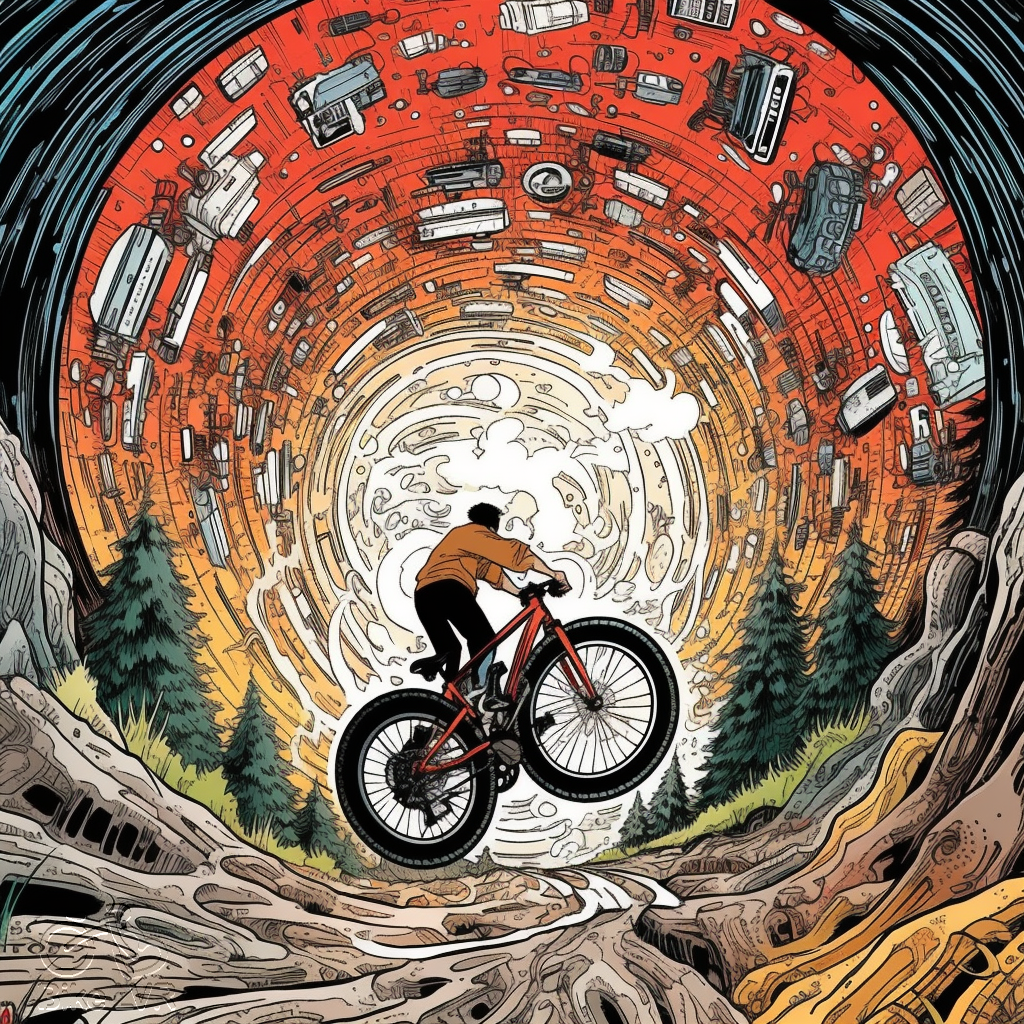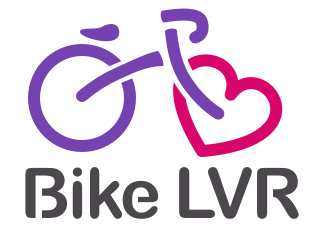
Mountain biking is an exhilarating sport that can sometimes lead to unexpected falls and injuries. Whether one is a professional rider tackling challenging terrain or a beginner discovering the thrill of off-road cycling, wearing the right protective gear won’t prevent spills, but it can reduce the likelihood you have to visit the ER.
Bike protection gear serves the dual purpose of safeguarding riders from injury and enhancing their overall performance. Taking the time to choose the most suitable gear can make a significant difference in one’s cycling experience.
Lightweight options for helmets, gloves, and pads cater to casual riders focused on comfort, while more heavy-duty armor is available for those navigating double black diamond trails or participating in professional downhill competitions.
Importance of MTB Protective Gear 🚵♂️
Protection and Safety
One of the primary reasons for using mountain bike protective gear is to ensure the rider’s safety while navigating rough terrains and challenging trails. Wearing appropriate protective equipment can significantly reduce the risk of injury in case of a fall or a collision. Some essential gear includes:
- Helmet: A vital piece of equipment that protects the rider’s head from severe injuries during falls.
- Knee and elbow pads: These protec the joints and absorb impact in case of a crash.
- Gloves: They safeguard the hands from abrasions and provide improved grip on the handlebars.
Comfort and Performance
In addition to safety, mountain bike protective gear enhances the overall riding experience by providing comfort and boosting performance. Lightweight and breathable materials used in protective equipment allow for improved airflow and prevent overheating during long rides. Some features that contribute to comfort and performance include:
- Well-ventilated helmets: These offer better airflow and comfort, keeping the rider’s head cool and focused on the trail.
- Padded shorts: These provide extra cushioning for extended periods of sitting and minimize discomfort on rough terrains.
- Shock-absorbing gloves: They help reduce hand fatigue and numbness, leading to better control over the bike.
By investing in high-quality, comfortable mountain bike protective gear, riders can enhance their performance, avoid unnecessary injuries, and enjoy a more pleasant experience on the trails.

What Types of Protective Gear?
Helmets
Helmets are an essential piece of mountain bike protective gear, as they protect the rider’s head from potential impacts. There are three main types of helmets: half-shell, full-face, and convertible. Half-shell helmets provide basic coverage for the top, sides, and back of the head, making them suitable for less aggressive trail riding. Full-face helmets cover the entire head, as well as the chin and face, making them ideal for downhill and more aggressive riding. Convertible helmets combine the versatility of both half-shell and full-face helmets, with a removable chin bar that can be attached for more demanding descents.
Gloves
Mountain bike gloves offer protection to the rider’s hands, as well as improved grip and control. They come in various styles, with some offering more coverage and padding for aggressive riding. Gloves can be categorized into two general types: fingerless or full-finger gloves. Fingerless gloves provide a more direct feel for the handlebars, while full-finger gloves offer increased protection from abrasions and impacts.
Elbow and Knee Pads
Elbow and knee pads are vital for protecting the rider’s joints from injuries during crashes or falls. These pads come in various styles, with some providing more coverage and padding than others, depending on the rider’s needs and preferences. The most common types of elbow and knee pads are soft-shell and hard-shell, with soft-shell pads offering more flexibility and maneuverability when pedaling, while hard-shell pads provide maximum protection during high-impact situations.
Body Armor
Body armor provides additional protection to the rider’s chest, back, and spine, particularly during downhill and aggressive riding. Some armor options include protective vests or shirts that can be worn under or over the rider’s clothing. Body armor is typically made from a combination of foam and hard plastic, offering a balance between comfort and protection.
Eye Protection
Eye protection, such as sunglasses or goggles, helps shield the rider’s eyes from dirt, debris, and sunlight. Sunglasses are suitable for less demanding riding conditions, while goggles offer a more secure fit and better coverage for aggressive riding and downhill trails. Both options can be found with various lens tints and technologies to enhance visual clarity on the trails.
Choosing the Right Gear
Fit and Sizing
When selecting mountain bike protective gear, it’s crucial to ensure a proper fit. Ill-fitting gear can be uncomfortable and may not provide adequate protection. Start by measuring your body dimensions and referring to the manufacturer’s size charts for each individual product. Remember to account for the layer of clothing you’ll wear underneath the gear. It’s generally recommended to choose gear that’s snug but not too tight, as it should allow ample freedom of movement for optimal performance on the trails.
Materials and Design
The choice of materials and design in mountain bike gear should prioritize durability, weight distribution, and ventilation. Look for gear made of high-quality, lightweight materials that offer adequate protection without hindering your movement. Many protective gear options include strategically placed padding, adjustable straps, and breathable fabrics to ensure a comfortable and secure fit. Additionally, some high-end gear options feature advanced materials such as D3O foam, which offers increased protection and flexibility.
Gear for Different Riding Styles
Your choice of protective gear will largely depend on the type of mountain biking you prefer, as different disciplines require specific gear combinations. For cross-country riding, minimal gear like a helmet, gloves, and knee pads is often sufficient as it focuses on endurance and lighter-weight equipment.
However, for more technical terrain and aggressive riding styles such as freeride and downhill, additional gear is recommended. This may include full-face helmets, body armor, elbow pads, and shin guards. In more challenging environments, investing in gear with enhanced flexibility and protection will prove beneficial. Don’t hesitate to consult with gear advisors to help you find the best combination of protection for your riding style.
Popular Brands and Products
Fox Racing
Fox Racing is a renowned brand in the mountain biking world and offers an impressive range of protective gear for riders. Their products are known for their quality and durability. Some popular Fox Racing products include:
- Fox Launch Pro Knee Guard: Designed for comfort and protection, these knee guards provide optimal support with a flexible and lightweight design.
- Fox Racing Proframe Helmet: Known for its advanced MIPS technology, this helmet delivers superior protection and ventilation for long rides.
G-Form
G-Form is another popular choice among mountain bikers for protective gear. The company uses innovative technology like SmartFlex padding that hardens upon impact, offering maximum protection while maintaining flexibility. Some noteworthy G-Form products include:
- G-Form Pro-X Knee Pads: Lightweight, breathable, and flexible, these knee pads provide reliable protection without limiting movement on the trails.
- G-Form Elite Elbow Guards: Featuring the advanced SmartFlex technology, these elbow guards provide both comfort and protection for aggressive riding.
IXS
IXS is a well-respected brand famous for its expertly designed protective gear for mountain bikers. They provide high-quality protection for different parts of the body, focusing on comfort and functionality. A few popular IXS products are:
- IXS Flow EVO+ Knee Guard: Ergonomically designed with a wrap-around, secure fit, these knee guards offer excellent protection with enhanced comfort.
- IXS Trigger FF Helmet: With its lightweight design and full-face coverage, this helmet ensures optimal protection and ventilation for riders.
When looking for mountain bike protective gear, it is essential to consider products from reputable brands like Fox Racing, G-Form, and IXS. Consulting with expert gear advisors can also help in choosing the right gear for your specific needs and riding style.
Caring for Your Protective Gear
Cleaning
Regular cleaning of your mountain bike protective gear ensures it remains effective and durable. After returning from rides on muddy or dusty trails, use a soft brush to remove dirt particles from the gear’s exterior. Gently clean the inner padding with mild soap and water, taking care not to soak it. Rinse thoroughly and allow the gear to air dry, avoiding direct sunlight or heat sources, which may damage the materials.
Maintenance
Performing proper maintenance of your protective gear will prolong its life and keep you safe on the trails. Inspect your gear regularly for signs of wear, such as tears or cracks in the material, loose seams, or buckles that do not fasten securely. If any issues are found, repair or replace the affected part to ensure your safety. Helmet maintenance is especially crucial, as it is a primary means of protection during a crash. Always examine your helmet for any dents, cracks, or compromised foam after an impact or a rough ride.
Replacement
No matter how well you care for your mountain bike protective gear, it will eventually need to be replaced. Helmets are designed to protect your head in one crash, so if your helmet has experienced any significant impacts, it is essential to replace it. Body armor and other padding should be replaced if they become too worn, lose their form, or experience any excessive damage. A good rule of thumb is to replace your gear every few years, depending on its condition and the intensity of your mountain biking activities.

Mountain Bike Protective Gear FAQ:
What kind of helmet should I wear for mountain biking?
A proper mountain bike helmet is essential for safety. Look for one that has an extended rear coverage, a secure fit, and meets safety standards like ASTM F1952 or CPSC. These helmets often come equipped with adjustable visors and ventilation.
Are gloves necessary for mountain biking?
Yes, gloves are a crucial part of mountain biking gear. They provide better control, protect your hands from blisters, and safeguard your knuckles from injury due to close proximity to trees and other obstacles.
Do I need elbow and knee pads for mountain biking?
Elbow and knee pads are highly recommended for aggressive trail rides and downhill mountain biking. They protect your joints from bruises, scrapes, or fractures during falls. Elbow pads typically consist of padded fabric with a hard plastic or metal plate on the outside and secure around your arms with Velcro straps. Knee pads follow a similar design and provide protection for your kneecaps.
What other protective gear is essential for mountain biking?
Other protective gear to consider for mountain biking includes:
- Body armor: For aggressive downhill riding or enduro racing, wearing body armor can provide extra protection for your chest, back, and shoulders.
- Shin guards: These can prevent cuts, scrapes, and bruises on the lower leg and are helpful when riding through rocky terrain.
- Goggles: Goggles protect your eyes from dirt, dust, and debris, while also providing increased visibility in various light conditions.
Remember, personal preferences and riding styles will dictate the level of protection you need. It’s essential to invest in the proper gear and ensure a comfortable, secure fit to maximize safety while riding.
Go Ride…Safe!
When it comes to mountain biking, prioritizing safety is essential for all riders. Investing in high-quality MTB protection is necessary to minimize the risk of injury while enjoying the sport. A comprehensive body protection setup generally includes four key components: helmets, gloves, knee and elbow pads, and mountain bike body armor. By investing in reliable MTB protection, riders can confidently tackle challenging terrain and maximize the thrill of this exhilarating sport while minimizing that ER visit.
